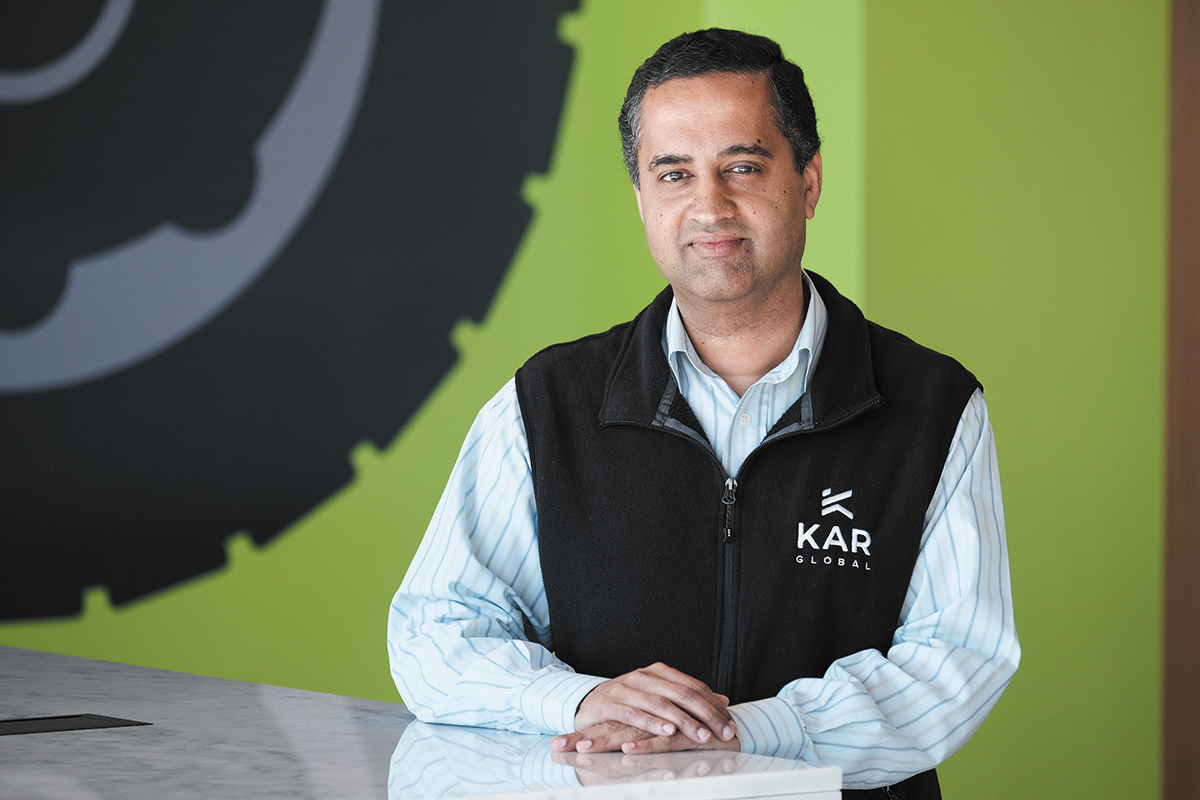Subscriber Benefit
As a subscriber you can listen to articles at work, in the car, or while you work out. Subscribe Now
 Srisu Subrahmanyam
Srisu Subrahmanyam
ADESA
chief operating officer
ADESA Chief Operating Officer Srisu Subrahmanyam doesn’t consider himself a car guy, but that’s OK, because ADESA isn’t a car company—although it does provide tools for vehicle auctions, fleet management and more.
Subrahmanyam, 50, earned a doctorate in chemical engineering from Purdue University in 1996. Since then, he’s held executive positions in aviation (as vice president of continuous improvement for United Airlines), logistics and education (as chief procurement officer for the Career Education Corp.) and technology (as vice president of global engineering for Ingram Micro).
In January 2017, Subrahmanyam took a job as senior vice president of business transformation at Carmel-based KAR Global, the parent of ADESA.
“I can’t tell you from listening to an engine whether it’s good or bad,” Subrahmanyam said. “But KAR really values diversity in experience and I was looking for something where I could learn and add value from other industries.”
One year later, he was promoted to chief operating officer for ADESA. Now, he’s responsible for the development of ADESA’s online and 74 physical automotive auction locations across North America.
“The pedigree of this company has been to invest in technology,” Subrahmanyam said. “If you talk to our executive team, they’ll all say that we’re really a technology company—we just happen to sell cars.”
What does it look like for a tech company to run physical car auctions?
On Tuesdays, at our Plainfield location, we will run about 2,000 cars in the space of three hours. We have about a dozen lanes and an auctioneer on the block. He’s yelling out as a good auctioneer would, as rapidly as he can. At the same time, you have an audience of bidders who are all watching these cars and bidding on them. That description hasn’t really changed in the last 60, 70 years. The only thing that has changed in the last 15 years is, we’ve basically taken that experience and put cameras in the lanes. We simulcast that out to the entire world, meaning you could have a dealer sitting on a beach in Florida bidding on a car in Indianapolis.
Is there a risk technology will eliminate the need for ADESA’s physical operations?
We’ve bought auctions as recently as three years back, and we continue to see a huge advantage in owning physical assets. As our chairman and CEO Jim Hallett likes to say, cars don’t go up to the cloud. You have to put the car somewhere.
At the same time, the physical asset is really morphing into something that supports the digital marketplace rather than being a stand-alone entity. Think of this like the Amazon model; they have a physical distribution center, but their front end is Amazon.com.
What is the most challenging technological disruptor you’ve faced while working at ADESA?
The most challenging one is not a technological disruption—it’s called COVID-19.
We shut down for two weeks and used that time to say: What do we want to do, and how do we come out of this crisis in such a way that buyers, sellers and our employees are not put in harm’s way, but are at the same time able to conduct commerce for our sellers?
We stood up an entirely new platform called Simulcast Plus. It’s essentially a live sale that goes out on the internet, but we don’t have a live auctioneer. We have a digital auctioneer. It’s an automated countdown, and if a bid comes in, it restarts the counter. If the clock runs out, that’s the end of the sale.
We actually didn’t build this technology for this crisis. We were building it for a completely different purpose. We wanted to create more transparency for buyers.
So, there’s no animated auctioneer in the corner of the screen wearing a cowboy hat?
If you don’t mind selling that idea for a hundred bucks, that sounds like a pretty good idea.
Auctioneers, they’re great at representing the seller, but sometimes there’s a lot of variability in the way they conduct business. Commercial consigners were asking for a repeatable way to remove the variations between auctioneers.
It’s going to give better information for the buyers, which means better returns for the sellers because they’re going to be more confident in the representation of the car.•
Please enable JavaScript to view this content.
